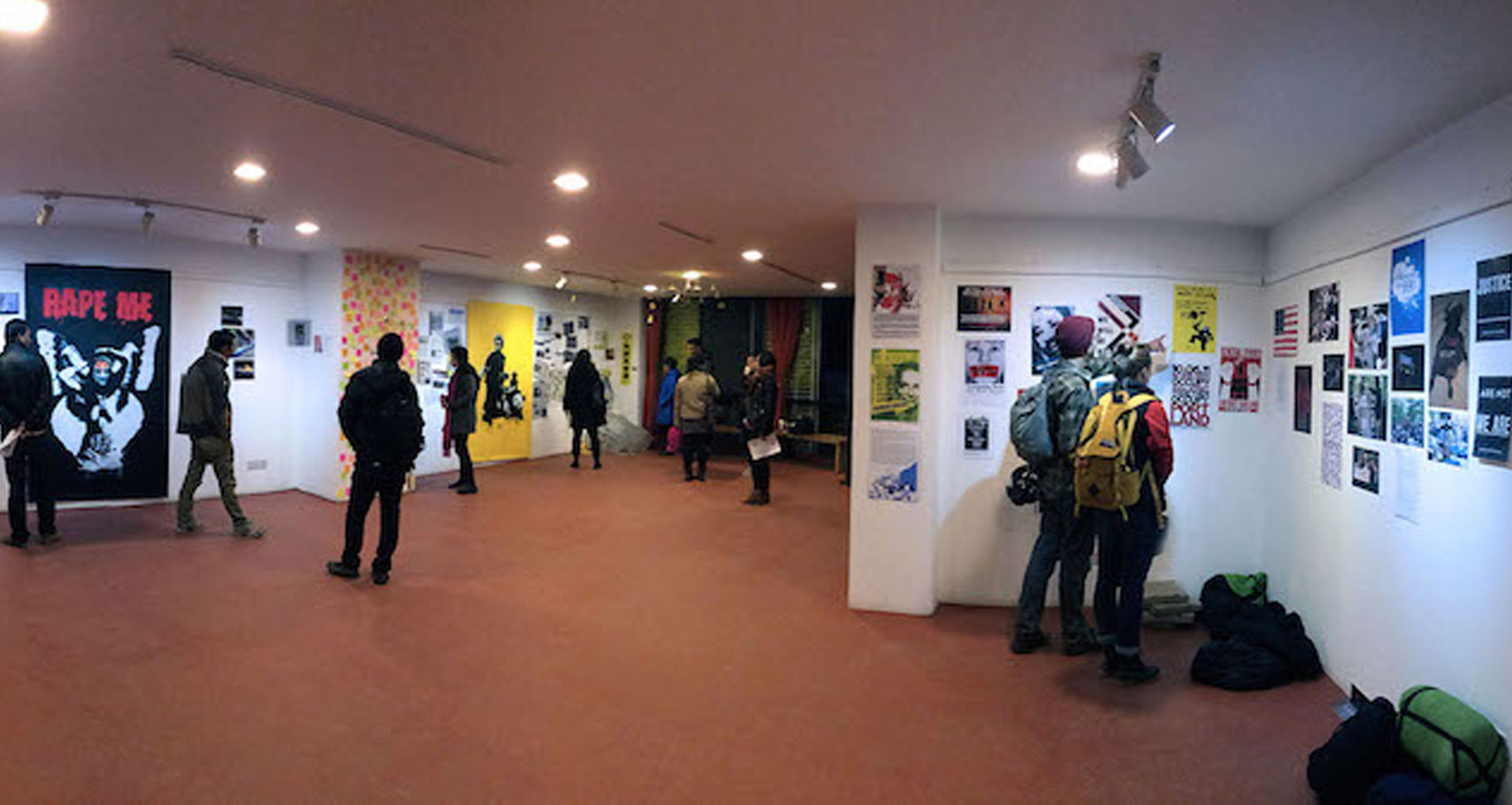To occupy, among other things, is to fill or take up (a space or time), be situated in (a position in a system or hierarchy), hold (a position or job), take control of (a country).
Occupation, thus, ranges from mere passivity to outright aggression. But the Oxford Dictionary of English also defines occupation as the act of entering and staying in (a building) without authority and often forcibly, especially as a form of protest. In the context of the Occupy protests around the world, mirrored in the feminist Occupy Baluwatar movement of 2012/13 in Kathmandu, to occupy is to push back against occupation perceived as unjust, whether it is passive or aggressive.
January 6, City Museum Kathmandu: An interaction with Cheryl Colopy, the author of Dirty, Sacred Rivers. As we discuss our passive, laissez faire occupation of the Kathmandu Valley, which has reduced the Bagmati River to a sewer even as we continue to dispose of our loved ones in its sluggish embrace, the #Occupy exhibition, consisting of original artwork and captioned posters from around the world, serves to distract. Two pieces by Sadhu-X draw the eye – a canary yellow depiction of a policeman dragging away a panda (standing in for the Hong Kong protestors), and a naked, monstrously inked Kumari, proclaiming “Rape Me”. The latter is a clear condemnation of the hypocrisy of our society – we worship more goddesses than one could shake a phallus at while allowing our mothers, sisters, daughters and friends to be harassed, oppressed, diminished – and I couldn’t help but wonder what the reaction might have been had “Rape Me” been displayed at Occupy Baluwatar.
The protests, focused on several cases of abducted, raped, or otherwise abused women, petered out after months of determined placarding on the pavement opposite Nepal Rastra Bank (being as close to the Prime Minister’s residence, that other Baluwatar of Occupation, that the protestors were allowed to approach). Promises were made, committees formed, and eventually the police began arresting more than just protestors. But the root causes remained unaddressed – the protests fading into so many others – and the protestors themselves appeared divided on the direction of the movement.
That Occupy Baluwatar failed to reap a lasting dividend for Nepali women is confirmed in “Harvest of Illusion”, a poem by Pranika Koyu, whose opinion piece on the defrauding and rape of Sita Rai by airport officials and police prefigured the movement. As part of the passionate, alternately belligerent and despairing anthology Bhav, Koyu’s “Harvest” suggests that her trust was betrayed somewhere down the line – whether by fellow protestors or the authorities is not quite clear. But Koyu herself admits to self-doubt that clouds her “glass of trust”. Perhaps she expected too much from a street-based protest?
Meanwhile, attendees at the City Museum event are bogged down in enumerations of compost kits and garbage cans. Less practically oriented, I want to know how it is that we tolerate the accelerating degradation of our land, water and air. Why, in fact, do we occupy this space? Hutta Ram Baidya, the “Bagmati Man”, passed away in 2013 without realising his dream of a meaningful occupation, frustrated by the cultural amnesia of the Valley’s inhabitants as much as the government’s abdication of its responsibilities. I ask Cheryl why she feels that it is not too late for Kathmandu (as she implies it may be for Delhi), but remain unsatisfied by the argument that this place is small enough to change. What’s left unsaid is how, in working for a better world, we are compelled to peddle tempered optimism if we want anyone to listen. But is the frog in the pan unmoved, unmoving? That’s for you and me to answer.
#Occupy runs till January 12 at the City Museum Kathmandu.
Cheryl Colopy’s book Dirty, Sacred Rivers is available at Vajra Books, Thamel.
Pranika Koyu’s Bhav is available at Educational Book House, Kantipath.

















I think the author is spinning praises where none is deserved – it is disappointing to see such callousness. That “Rape Me” painting is just another manifestation of misogyny. Reminds me of that stupid Kurt Cobain song – allegedly a feminist and all, but proved to be nothing more than a egotistical opportunist. I think the artist does not understand that rape is always non-consensual – the art thus alludes to some morbid fantasy or just plain idiocy.
[…] “???” ????????????? “?????? ????” ???????? ??? ?????? occupy movement ? ????? ??? occupy baluwatar ???????? ?????? ???? ????????? ? http://www.lalitmag.com/2015/01/occupy-yourself/ […]
[…] “???” ????????????? “?????? ????” ???????? ??? ?????? occupy movement ? ????? ??? occupy baluwatar ???????? ?????? ???? ????????? ? http://www.lalitmag.com/2015/01/occupy-yourself/ […]